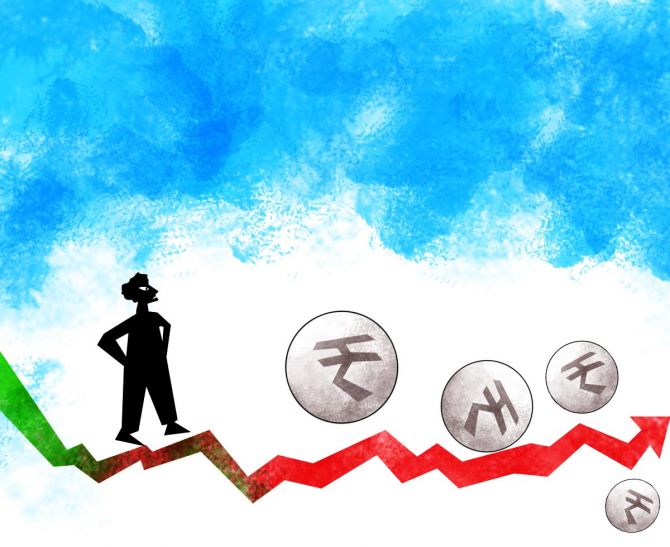As the Indian equity markets scale a new high, the gap between stock prices and the underlying corporate earnings has widened to its highest level in more than 30 years.

At its current level, the benchmark BSE Sensex has run up nearly 31 per cent more than the growth in its underlying earnings per share (EPS) in the past 20 years.
Most of the divergence between share prices and underlying earnings growth occurred in the past 10 years.
In the past, the index value largely tracked growth in earnings except during brief intervals but the gap filled with a subsequent correction in the market.
The Sensex is up 1,210 per cent cumulatively since April 2004, appreciating at a compound annual growth rate (CAGR) of 13.7 per cent.
The index was 5,665 at the end of April 2004 and it closed at 74,244.9 on April 12.
In the same period, the Sensex underlying earnings per share (EPS) has gone up 899.3 per cent cumulatively, growing at a CAGR of 12.2 per cent.
The index EPS grew from Rs 292.8 at the end of April 2004 to Rs 2,926.5 on Friday.
However, the index underlying EPS had grown at a faster pace than the Sensex from 2004 to 2014, and the trend reversed during the 2014-24 period.
The index EPS had grown at a CAGR of 15.3 per cent from April 2004 to April 2014 compared to 14.9 per cent CAGR rise in the Sensex in the period.
In comparison, the index has grown at a CAGR of 12.9 per cent since April 2014 compared to a 9.1 per cent CAGR growth in the index EPS in the period.
The index is up 231.7 per cent cumulatively from 22,417.8 at the end of April 2014.
In the same period, the index EPS is up 133.6 per cent from Rs 1,227.7 at the end of April 2024 to Rs 2,926.5 on Friday.
The index EPS tracks the combined net profits of India s top 30 stocks that are part of the index.
The EPS is calculated by using the index closing value and its price-to-earnings multiple for the day as provided by the exchange at the end of the day.
The Business Standard analysis is based on the month-end value of the Sensex and its price-to-earnings (P/E) multiple.
Analysts attribute the growing divergence between stock prices and corporate earnings to the valuation-driven rally.
The ongoing rally in the Indian equity markets is largely driven by the valuation rerating of stocks rather than a commensurate rise in earnings.
As a result, most of the gains in equities in recent years have come from expansion in valuation multiples rather than higher corporate profits, said Dhananjay Sinha, co-head of equities and head of research of strategy and economics, Systematix Group.
The index trailing price-to-earnings (P/E) multiple expanded from 18.26X at the end of April 2014 to 25.7X on Friday.
In contrast, the P/E multiple was 19.3X at the end of April 2004.
For comparison, the index P/E multiple has been 20X on average since December 1990.
The numbers suggest the movement in the index has closely tracked growth in its underlying EPS, albeit with a lag.
A faster rise in the stock prices relative to the earnings growth has been followed by a market correction. For example, the index has rallied 89 per cent between July 2006 and December 2007 compared to only a 33 per cent rise in its EPS in the period.
This was followed by the market crash in January 2008, which filled the gap between stock price and underlying corporate earnings.
Similarly, the Sensex had rallied 80 per cent between February 2016 and December 2019, compared to 12.2 per cent cumulative growth in the index EPS in the period.
This gap between stock prices and earnings was filled in the pandemic crash as the index corrected by 28.6 per cent in the next three months despite a 2 per cent rise in the index EPS in the period.
The Indian equity markets are now in a similar situation.
The benchmark index is up 21.5 per cent in the one year compared to 8.5 per cent rise in its underlying EPS in the period.
This raises the risk of market correction unless corporate earnings pick up pace in the forthcoming quarters.











